Fat Tire Bikes and Deer Hunting: Is this a thing?
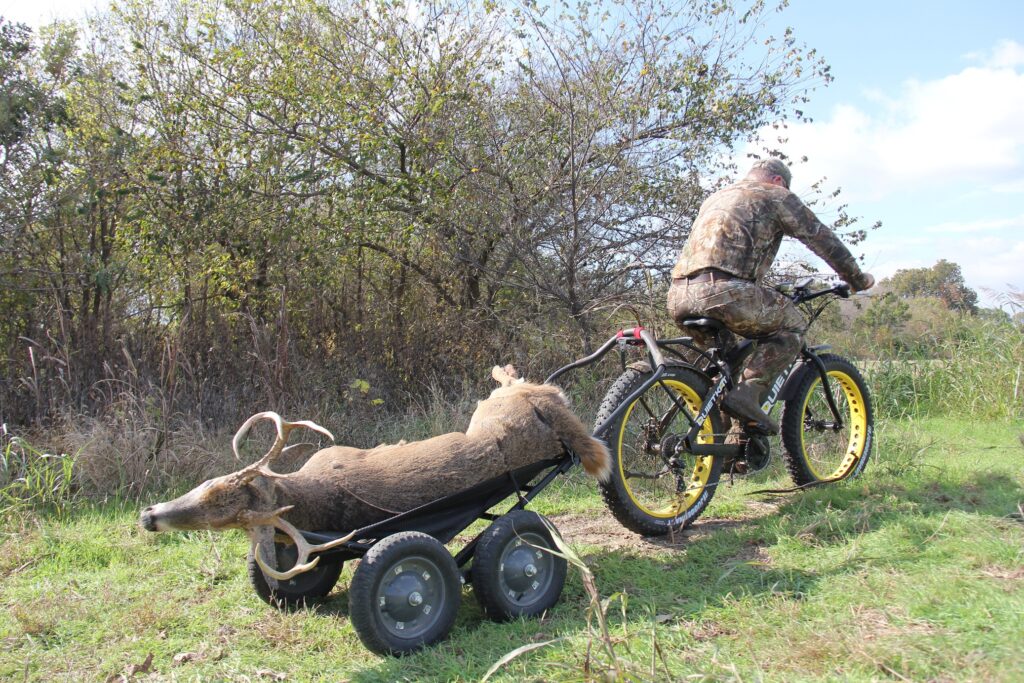
You’ve seen the rise and heard the buzz about this, but is this for real? You bet it is; and it is changing the face of public land deer hunting. By Bernie Barringer I was enjoying the warming sun on my face when a grunt jolted me to attention. I sat alert and soon heard hoofbeats in the leaves. Getting my bow in hand, I followed the sound of the movements as they drew near and soon a doe came trotting into sight. Another grunt revealed the location of the buck following her. Like a gift, she made an arc through the trees and trotted right past my stand. With his nose to the ground, the buck followed, only hesitating long enough for a broadhead-tipped arrow to slice through his heart. A few minutes later, I stood over him with admiration and the satisfaction that comes from shooting a good buck on public land hundreds of miles from home. It was the third buck I had shot in this location in four years. In the past, the feeling of satisfaction was short lived as it was overcome by a deep sense of dread. You see, one of the reasons this spot is great lies in the fact that it’s so tough to access. By drawing a line on Google Earth, I know I was 1.8 miles from my truck. That’s a long way to drag a 180-pound buck; then come back for my stands and equipment. If I was lucky I could get it all in two loads over the next four hours. But this year would be different. I had equipped myself with a Fat Kat electric powered hunting bike and a Crawler deer cart that I could use as a trailer behind the bike. I had everything out of the woods and I was headed down the long road towards home in just over an hour. When I first saw the introduction of fat tire hunting bikes designed for hunting, I was pretty skeptical. They are a significant financial investment and I wasn’t sure just how much of an advantage they would be. Riding a bike for hunting? Really? But as I began to analyze the way I hunt on so many public lands in different states across the Midwest, Little “aha” moments came to light. Most public lands have a network of access roads used by the state game departments. These roads and trails are used to manage food plots, patrol for poachers, improve habitat, etc. As I began to think about how many miles I have walked on these two-tracks over the past couple decades, I began to realize that using a bike on them would be so much more efficient. But it wasn’t until I actually got a bike and started using it that I realized how much more efficient riding can be over walking. It’s downright incredible, in fact. When I attack a piece of public land, my strategy involves scouting for sign, the daily chores of hanging and checking scouting cameras and of course the hauling of stands, sticks and gear to the hunting destination. And then of course all this stuff has to be hauled out when it’s times to leave. Let me explain how the bike helps me accomplish all aspects of this more effectively. In southern Kansas, I knew of a plot of clover well back off the road. I had seen the field on Google Earth, and knew that it was planted into clover based on a conversation with a local biologi st. But I had never checked it out because it was so far from the nearest parking area, and it would take so long to scout it out once I was back in there. I figured it was a 3-hour job and I had never been willing to commit that much time. In the fall of 2016, I rode my bike in there, rolled around the entire field looking for tracks, trails, scrapes and rubs. I hung two trail cameras and was back at my truck in 45 minutes. But two more aspects of this endeavor were the biggest eye-openers. As I coasted through that property, my scent intrusion was almost non-existent compared to walking, and I hadn’t gotten sweaty because I had used the electric pedal assist any time I came to an uphill climb. At that moment I knew this changed everything. There are several companies making these bikes for hunters, and each offers the option of an electric pedal assist. With the addition of an electric motor, you can ride the bike three ways. You can elect to pedal the bike without an assist, using it only as a bicycle with all-terrain tires. Or you can use the electric assist to make pedaling easier, which is especially helpful going up hills, through rough terrain and while pulling a load. The third option is just to use the electric motor without pedaling at all. The bike will go about 20 miles an hour and you can ride 15-20 miles on a charge, depending on the hills and amount of gear you are carrying. I have used it all three ways and I find that I use the assist the most. Typically I only use full electric in the mornings on my way to the treestand. This allows me to get into the woods wearing all my cold-weather clothing without the sweat that would be involved in walking. The addition of a trailer was another game changer for me. I have been using the innovative game cart made by Hawk Hunting called “The Crawler.” This cart has four wheels and a pivoting axle that allows it to roll right over logs and obstructions with east. It makes getting your gear into the woods and your deer out a breeze. It was a natural extension for me to simply attach the cart to the rack on my bike with strong small bungees and use it as
Top 5 DIY Rut Hunts for 2018
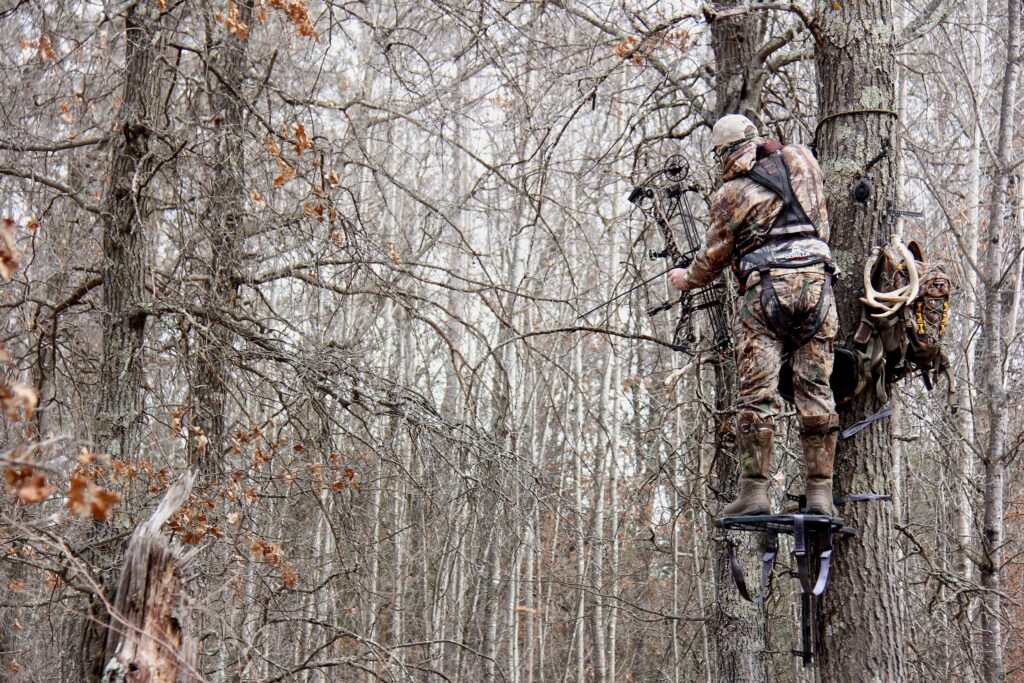
As a travelling DIY hunter, I am always in search of the next mature buck, no matter where he lives. That has taken me to several states all through the hunting season, from opening day till the final days of the season in a state far from home. By Bernie Barringer There is one thing for sure, you will find me in one of a handful of places during the first two weeks of November. Because you are reading this post, I can assume I do not have to explain the lure of the rut to both hunter and hunted. Sitting in a great spot with confidence boiling over, knowing that at any moment, a rut crazed buck may trot right up to me with tongue hanging out, is a heart-quickening passion that I don’t expect to be fully satiated at any point in the foreseeable future. I could easily list two dozen great places to spend your hard-earned vacation during Sweet November, but I have narrowed it down to my top five in no particular order. If you choose one of these areas, you may just run into me out there somewhere during November. I’ll be the guy with the glassy look in his eye, hustling towards the next rendezvous with destiny; acting like the clock is ticking way too fast on that special time of the year. Because it is. Central North Dakota This would not be on the top five-list of very many whitetail hunters, but that’s one of the things that makes it so good. There are tens of thousands of acres of public hunting land along each side of the Missouri River system from The Sakakawea dam to Bismarck. I have literally hunted it hard for an entire week without seeing another bowhunter. Oh, there are other hunters out and about, you will recognize them by the shotguns and the long pheasant tail feathers poking out of their vest pockets. The whitetail habitat is scattered, but once you find it, you will be surprised at the number and quality of bucks that use it. Don’t take a climbing stand. The tree you want to be in is likely to be a 200-year-old cottonwood as big around as a VW or a snarly willow. Ladders and ground blinds will give you more options. Deer numbers are low, but slowly recovering after some bouts with disease and a couple rough winters. When the population is back I’ll be back there too. Tags are available over the counter. Northern Missouri The northern two tiers of counties along Iowa’s border offer a mixed bag of positives and negatives. There is abundant public land available; the Missouri Dept. of Conservation takes good care of it, planting food plots and managing it well. Disease has knocked the population down recently, but good bucks are still available. You can camp for free in the parking lots of the various hunting areas, in fact some have pit toilets, campfire rings and picnic tables. Good bucks are available, with a realistic chance to see a real eye popper, but just about everyone knows about it. The areas near the access points get hunted hard, and there are enough hard-working hunters willing to go the extra mile that even the back-in hollows and ridges see some foot traffic and the occasional treestand. But the bucks are there and they are found in numbers and size enough to make it worthwhile to elbow yourself right in with the rest. A couple times to avoid are the second weekend in November when a youth rifle season adds a lot of pressure to the public areas, and the opening day of rifle season which usually falls just after the middle of the month. Over-the-counter tags are a bargain at $225, which allows you to shoot two deer and two turkeys. Southeast Kansas Just a quick look through the Boone & Crockett record book will tell you all you need to know about this area. It’s world class when it comes to producing top end bucks. While most of the other areas in my top five offer a realistic chance to shoot a mature buck better than you can probably shoot at home, this area offers you a chance to find the photo of a Booner on your scouting camera SD card. There is a good representation of public hunting land, but even better, there is a lot of land enrolled in the Walk in Hunting Access (WIHA) program. It’s surprising the quality of land that local farmers have opened to public hunting, and it doesn’t get the hunting pressure that’s found on state or federal public land. You must apply for a deer tag in Kansas, but you will draw every other year, and maybe the first year. Southern Iowa I have been lucky in Iowa. I have drawn an archery tag for the top zones with two to three preference points six times. I have hunted Iowa every third year since I started applying. Many hunters wait longer, but three points will almost guarantee you a tag. Iowa is land of the giants and there’s a long line to take part in the rut there. The southern portion of the state separated by interstate 80 is where the big bucks are consistently found. There are pockets all over the state that produce world-class whitetails, notably the northeast corner of the state, but for my money, I want to be south of I-80 and most of the time, east of I-35. Because the state limits the number of nonresident tags to 6,000 the public land is not by any means overrun with nonresident hunters. You will find some hunting pressure from both resident and nonresident hunters on the state and federal public land. The state land is often broken up into small parcels, but the Federal land mostly surrounds the large reservoirs and the banks of the Mississippi River. If you do your research, are willing to
Should You Feed Deer in the Winter?
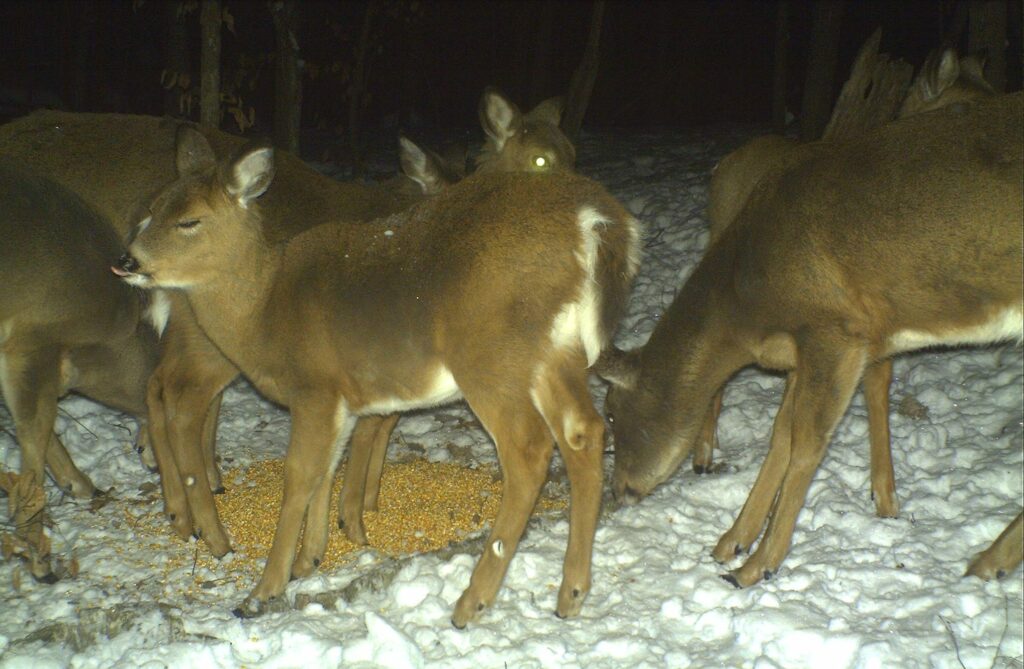
Providing supplemental feed to deer in the winter is controversial and often illegal in some states, but other states encourage and even help fund it. Here’s a look at some of the pros and cons of winter feeding. By Bernie Barringer The Minnesota DNR has often been opposed to recreational deer feeding, and in fact, with the increased risk of Chronic Wasting Disease and other disease transmissions, there have been discussions about banning it. The winter of 2014 was very difficult winter for the deer northern Minnesota. Deep snow and cold temperatures created conditions where the predators had a heyday with the stressed deer. In many cases wolves moved into certain areas and slaughtered far more deer than they could ever eat. Deep snow made finding food extremely difficult and deer were near starvation by February and March. Despite the fact that the state of Minnesota DNR as often been opposed to winter deer feeding they mobilized volunteers across much of northern Minnesota with snowmobiles to feed corn to the stressed deer herds. Near my home there was a 20-acre cornfield that did not get harvested before the snow came. There were 60 to 70 deer feeding and that cornfield every night. I had a discussion with a DNR officer about recreational deer feeding about that time. He felt strongly that recreational deer feeding concentrated the deer into areas where they could more likely transmit diseases. My question for him was this, “There are 70 deer feeding in this cornfield; they are nibbling on the same branches, eating fecal matter and chewing on the same corncobs. Wouldn’t it be better to have those deer spread out into a dozen smaller recreational feeding sites at the homes of the adjacent landowners, rather than have them all bunched up in one place? Wouldn’t that cause a reduction in potential transmission of diseases rather than an increase?” Neither one of us really have a definitive answer to that question. These are just a couple examples of the controversy that surrounds recreational feeding of deer. Let’s take a look at some of the pros and cons. Acclimation to Humans Opponents of deer feeding feel that providing handouts for deer can make them more vulnerable to negative human influences. In some cases this may be true, and there are specific instances where deer feeding in the wrong areas has caused significant increases in roadkills. Deer feeding during hunting season can concentrate deer into areas where they are more vulnerable to hunters. But ask anyone who has hunted for deer over bait in states where baiting is legal and they will tell you that putting deer in a position where it’s easier to shoot them is a lot easier said than done. Deer quickly learn when they are being hunted and will go nocturnal. Many states allow baiting of deer but very few mature bucks are killed this way. The human intrusion associated with putting the bait in place is simply more than a mature buck will tolerate. Even younger deer and does learn quickly that feeding under the cover of darkness is their best survival strategy. One significant issue with feeding deer is the consistency. One of the worst things that can be done is to provide a food source on which the deer become dependent, and then stop feeding for a long period or quit altogether. Either of these can put the deer at significant risk. If the deer are relying on you for a daily food source, do not let them down. Concentrated for predation Human predators and not the only threats deer face. Deep snow can cause deer to bunch up around the available food. Particularly across the northern states, deer yards create easy opportunities for predators. When snow makes it difficult for deer to move around, the predators can move in and make short work of an entire herd. I have personally seen this in northern Minnesota where a pack of wolves decimated a herd of more than 40 deer in one week. Wolves are controversial enough but when things like this happen, the anger rises quickly. Contrary to what wolf lovers would like you to believe, wolves do not kill just what they need to survive and no more. Put yourself in a wolf’s shoes (paws) for a moment and think of it this way: you know where there’s a lot of deer, so you go kill one and eat your fill. The next day you’re hungry again, so you go back and you have the option of gnawing on a hunk of frozen meat or, with very little effort, grabbing a hot meal. Which option sounds the best to you? That’s why wolves can wipe out so many deer in such a short time. Other predators also capitalize on vulnerable deer. Coyotes, mountain lions, feral dogs, even bobcats and eagles have been known to feast on the easy pickings. Keep these predators in mind when you choose your deer feeding location. It’s best to utilize several smaller feeding sites rather than one large one. Digestive Issues High-carbohydrate foods are needed to get deer through the winter because they produce quick energy and body heat. But radical changes to the deer’s diet can be harmful and in some cases fatal. Introducing a source of corn to very hungry deer when there is very little other food available can make it very difficult for the deer to digest the corn. When deer are feeding on woody browse, their stomachs are adapted to digest that type of food. They do not have the ability to change quickly in a sudden introduction of large quantity of high carbohydrate food can cause acidosis which can make them sick and in extreme cases can kill them. For this reason it’s best to introduce alternate food supplies well before winter hits so the deer’s digestive system have plenty of time to adapt. In cases where corn is being introduced to help starving deer it’s best
How to Pattern Late Season Bucks
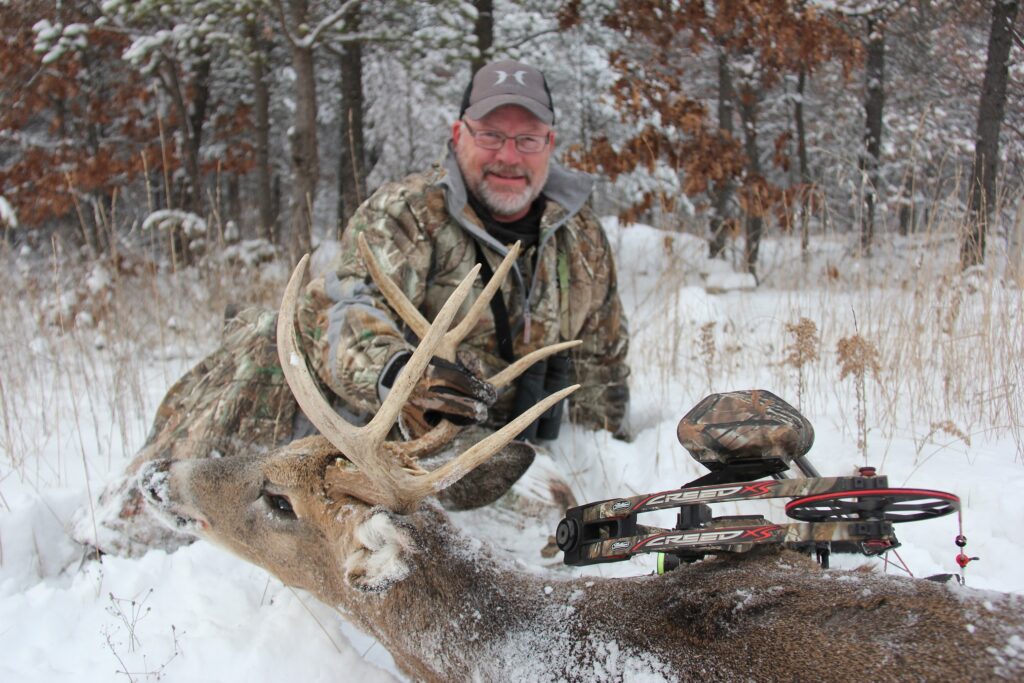
Following the rigors of the rut, bucks need to replenish body condition and body fat. They instinctively know what food will bring them back into form. They revert to a very predictable daily pattern of feeding to bedding. Here’s a primer on how to take advantage of this window of opportunity By Bernie Barringer Despite the snow swirling around me, I pushed through the thick brush, spurred onward by an unfilled buck tag in my back pocket. Arriving at the edge of the field, I could see there were a few deer already feeding in the corn stubble, but neither of the two bucks I was after could be seen. I carefully climbed 20 feet up into my treestand, swept the snow from the seat and settled in. By the time I got my bow towed up on the haul rope, a buck appeared at the woods line and began to move across the field towards me. My plans for a long cold vigil suddenly changed and this buck’s appearance created a flood of optimism that this night might be the night. I love hunting the last days of archery season despite the nasty weather because I have so many good memories and successes to show for it. Many states have bow and muzzleloader seasons that last beyond Christmas and well into January. Shooting a buck at this time is often thought of as a difficult task because the cover available and the habits of the deer are not what they were during the majority of the season. But getting within bow range of a buck at this time is a lot easier than you think if you know what to look for. The key for me has been the understanding that the deer have different needs during cold weather than they do during the rest of the hunting season. Remember a few years ago, when the Adkins diet was a craze? People were losing weight by forsaking carbohydrates and consuming more protein. Now bear with me for a minute, I am not off on a rabbit trail, this has everything to do with late season deer hunting. The Adkins diet is based on the differences between proteins and carbohydrates. In short, “carbs” are more easily stored by your body than protein. Protein is used to build muscle and is used up quite quickly by the body. Most proteins are not easily stored. Carbs on the other hand, are primarily composed of sugars, and your body is very good at converting carbs into storage for use at a later date. Storage, of course, is in the form of fat. Your body naturally wants to maintain what it’s got. Like most diets, this one starts to get hard when you begin craving the carbs your body is missing. Whitetail deer crave certain foods too. Like your body and mine, a deer’s body sends messages to its brain that it needs certain nutrients, and the deer naturally seek out the foods which contain those nutrients. So a basic understanding of which foods in your area contain those nutrients can go a long way towards understanding where the bucks will be feeding on any given day. There are three macronutrients that all humans and animals need: protein, carbohydrates and fats. Understanding when bucks crave these nutrients and where they will find them goes a long way towards figuring out their movement patterns, particularly during the late season when their patterns become quite predictable. By examining where the deer find what they need to eat on a daily basis, and where they bed, we can put together a pattern for intercepting them on their daily travels to and from these locations. Why Deer Crave Protein and Carbs Bucks eat little during the rut and they are on the move at all hours of the day. After the rut, bucks are run down. Their fat reserves are gone, and even their muscle mass is diminished. Nothing restores muscle faster that protein, and soybeans are loaded with protein. Field corn is very high in carbohydrates. Most mast crops are super high in carbohydrates and fat. Acorns, especially the meaty varieties like those from white oaks, offer a large dose of fat and carbs. Honey Locust pods are high in proteins and fats. You get the idea. The key to a whitetail in the late season is through his stomach. High carb foods provide energy to create body heat. Corn fields left standing in December into early January will be swarmed by deer. In cut corn fields, deer will glean waste corn from the ground as long as it is available, and they can easily smell even a single kernel through a foot of snow. Interestingly, deer can eat raw soybeans; which are toxic to humans and any animal with only one stomach. Because deer are ruminants, their stomach saturates the soybeans before they are regurgitated and chewed, which renders them digestible. Since soybeans provide quick energy through a combination of proteins and carbs, deer will often seek them out during the coldest weather. A stretch of below-zero weather will move deer off the corn and acorns and onto the soybeans because of the quick turnaround of energy they offer. During these periods of deep freeze weather, immediate energy is more important that storage of fat. Food plots of soybeans or late-standing soybean fields attract more deer than corn does during the harshest weather. When the weather moderates, they may move back to the high-carb food sources. Standing cornfields offer a combination of bedding cover and feed. During mild stretches of the early winter, deer often stay in the corn around the clock. They feel safe in the cover and it provides protection from the wind as well as food within reach at all times. So bucks are see king out specific kinds of foods based on which foods are higher in either carbs or proteins and they will gravitate towards the food sources that offer
The Science of Scents: How Well Can Deer Smell?
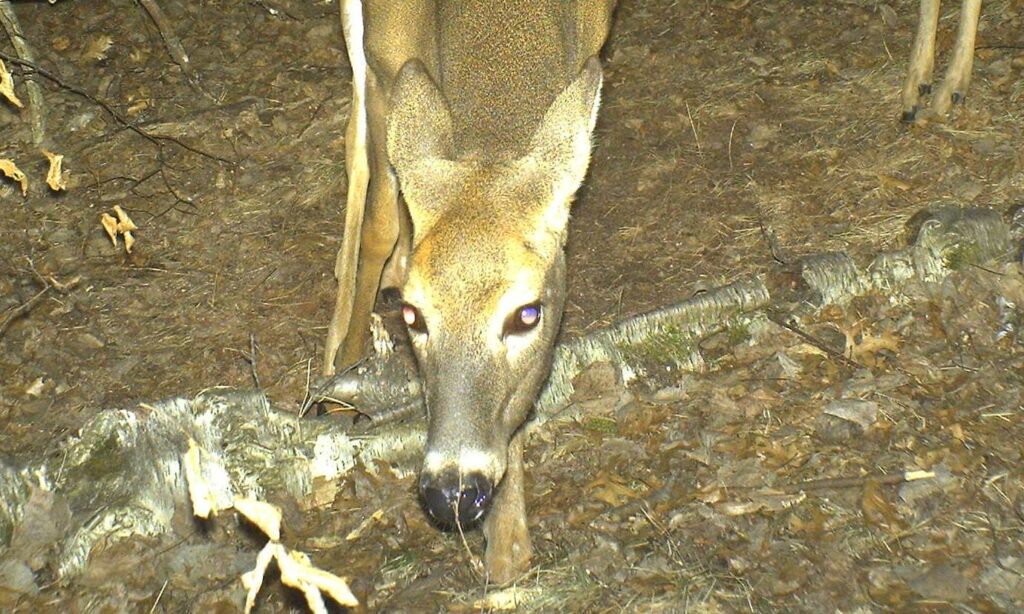
The sense of smell among members of the deer family is legendary. In fact, it’s hard for humans to grasp. But recent research into the sense of smell of elk and whitetails finally puts some numbers to it. By Bernie Barringer I was aroused from my calm, patient state by a flicker of movement to my right. I slowly turned my head and saw a buck approaching at a slow walk. Suddenly at full alert, I started looking for an opportunity to get my bow off the hanger as the mature buck closed the distance. When he stopped and looked away, I got my bow in hand and ready to draw. This buck was really nice, and my heart began to pound. When the buck was 15 yards away, he stopped and froze. His demeanor changed as he dropped his head to the ground and sniffed the trail in front of him. In an instant, he had gone from relaxed to tense. He paused for a few seconds and then took three steps backwards before turning, lowering his head, and disappearing into the forest. Clearly he had smelled something that he didn’t like. I had had approached my stand that day from downwind–the opposite direction–so he couldn’t have smelled my ground scent. Then it hi t me. He had crossed the path where I had approached the stand… yesterday! He smelled my ground scent from 18 hours previous. The ability of a deer to smell danger is legendary, and it stands at a level that we humans cannot even comprehend. It is so far above our ability to smell, it’s hard to get a grasp on what their world must be like each day as they interpret the world around them with their nose. Fortunately, we know a lot more than ever about how deer smell. Let’s take a look at four things that give members of the deer family their amazing ability to smell what’s around them. The Long Snout Members of the deer family and predators need their sense of smell to survive, so they are equipped with far more olfactory receptors than those animals that do not rely on their sense of smell. The long snout creates more room for special nerve cells that receive and interpret smells. It’s estimated that humans have about 5 million of these olfactory receptors, while members of the deer family, including elk and moose, have about 300 million. Bloodhounds have about 220 million. Members of the deer family have something else going for them. Some of these olfactory receptors are specialized for certain scents. For example, research has shown that elk have certain sensory cells that are tuned into the chemical signature of wolf feces. It stands to reason that deer do as well. There is no scientific research to back it up, but whitetail deer may have receptors that specifically recognize the chemical signature of the bacteria that create human scent. The Specialized Brain The area of the brain dedicated to interpreting scent is larger in deer than in humans. The drawing of air across all those receptors in the snout sends signals to the primary olfactory cortex, which is in the temporal lobe of the brain. Because this part of the brain is larger in animals that use their nose for survival, this creates an ability to interpret the smells that’s added to their ability to pick up all those smells with those 300-million receptors. This would suggest that using a cover scent of any kind would be futile, because a deer can simply sort the smells out. A hunter using deer urine to cover his scent smells like a hunter and deer urine to a deer, not just one or the other. While cover scents have little effectiveness, the ability to reduce (not necessarily eliminate) human scent with antibacterial soaps, detergents and sprays, anti-microbial Scent Killer, and carbon is proven science. The science of the deer’s smell would suggest that reducing human odor is worth the trouble, attempting to cover it up is not. Smelling in Stereo Members of the deer family also have broader lateral nostrils which allow them to detect smells directionally. Moose have the most pronounced application of this. This allows the animals to determine the direction of the source of the smell more readily. This is called “stereo olfaction,” and it allows members of the deer family to more quickly determine the source of danger. You may have noticed a deer raise its head as it is smelling the air. The deer is flaring its nostrils while drawing air across the olfactory receptors in its snout. The animal can quickly determine what it’s smelling and the direction it’s coming from. They Live by Their Nose The fourth thing that helps members of the deer family survive is simply an increased awareness of the smells around them. We humans might not pay much attention to the scents coming in through our nose until it overpowers our other senses. We don’t think about smells much; until someone hands you a child with a dirty diaper, or you walk into a restaurant where they are frying bacon. Contrast that to the life of a deer, which is focused on the smells coming through the nose 24-7. The other four senses take a back seat to the importance of smell in their everyday lives. We humans can increase our awareness of the smells around us just by paying attention to them. Have you ever smelled a rutted up buck before you saw him? How about a herd of elk? Using our ability to smell what’s around us is a skill that can be developed. After all, we are predators at heart.
